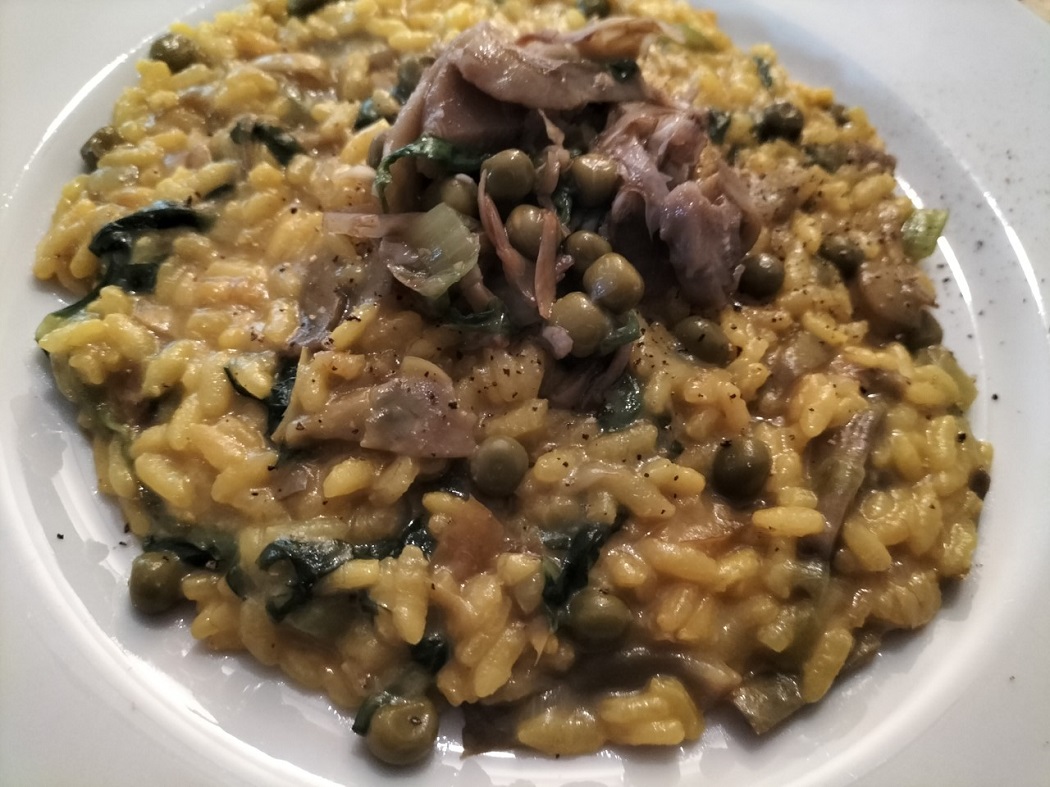Every dish has its own history that is intrigueing and Sgurgola Donuts are known as the Queen for their particular shape that resembles a crown.
In the tradition the donuts were made at Easter, with white flour, also marking the arrival of spring. They were like a pagan omen in which the Resurrection of Christ was accompanied by the Spring Festival and picnics at the Abbey.
The Sgurgola lunch tradition on the Badia Abbey meadows seems to date back to about one thousand, when it was still a convent of Benedictine nuns, and ended in the nineteenth century when a law of Napoleon forbade burials of the dead in the house and forced the construction of cemeteries. The Sgurgola cemetery was built right next to the monastery and the abbey became the church cemetery. A picnic in the cemetery was not in tune with the spirit of the festival!
But back to the donut whose processing is complex even for the artistic aspects of its final form. Like modern 'cake designers', in fact, the Sgurgola families were preparing carefully the dough into different shapes: the classic crown and two variations for the children. For girls were created the 'Pigne' a kind of babydoll adorned with fringe and lace, made with pasta, and whose hands held boiled eggs. For boys ‘Torteri’ were prepared, pasta twisted into donut-shaped with a hard-boiled egg in the center.
The donut is sweet, but anise and a pinch of salt give it a taste that goes well with salami and wine. For those not Ciociarian (or at least from the center of Italy), the famous Easter breakfast is made with a pizza or cake, salami and boiled eggs to which, at a later time, the chocolate is added.
The preparation of the bun was started two days before, and the mixture was worked and left to rise for 24 hours. After a long rest, the dough was kneaded into the desired shapes and left to rest again for another 8-10 hours. At this point it was ready to be 'scottolato' (boiled) and put into the oven.
The Sgurgola donut was so etched in memories of children that all emigrants would try to return to the town at Easter time just to be able to enjoy again and regain all their happy memories.
Marriages of Sgurgola
What is the best month to get married? Today we think of spring and the sun but once life was marked by the rhythms of the countryside and the couple married in January or in February.
For Sgurgolani, in fact, the main moment of the year was the harvest and in spring they had to take care of plants, crops and preserves. All life was concentrated on the moment of sale of grapes and the killing of the pig from which were obtained the resources to meet the expenses of the year, the dowry of the girls and the wedding dinner.
The famous Grape Festival is born from the collective need to break free from the strain of grape growing and celebrate the harvest and the future wine.
Then there was the season of the olive harvest which is followed by the months of less committment for a farmer, being those of winter. That's why in the old registers of the town all couples married just in January and February.
For the occasion they prepared the best dishes: Pasta with sauce made with 'ricaglie' (chicken giblets) and chicken legs, plus chicken with roasted potatoes and thin donuts made with wine, oil and flour.
Sagne festival
Sagne is the symbol of the Ciociaria, a pasta with flour and eggs that was typical of the holidays. Even now, on August 14 in Sgurgola is celebrated the Festival of Sagne in which this dish is distributed free to the population topped with the famous 'Sgurgola Sugo' (sauce).
The women get up early in the morning to prepare this sauce with three kinds of meat: beef, pork and sausage flavoured by bacon. The sauce should 'pappleare' (be simmered) for at least a couple of hours to allow the oil rise to the surface and the sauce is ready.
The dishes for the working days
In the 'normal' days the meal was composed mainly of maize flour, polenta, topped with various vegetables. During the spring a typical dish was blanched beans, sautéed red pepper and then cooked directly with the mixture of polenta.
Meanwhile, corn is also prepared in layers with the cabbage leaves or prepared in the form of a ball with more accompanying vegetables. This layered corn and cabbage dish is called 'Maretozzo' and is not to be confused with the sweet of Rome.
Smoked fish was part of the traditions of Sgurgola and 'Frascategli with Saraghe and Pupernelle', i.e. a plate of polenta made with corn, smoked fish and hot peppers, is famous.
Many of these dishes can be enjoyed today during the famous Grape Festival of Sgurgola. Look for the booth of Laura Pace who collected the recipes of the local tradition and with her friends prepare them for the public on the occasion of traditional festivals. I thank her for her precious recipes that will give great taste to the party, and I'll try to remake at home!









Follow us